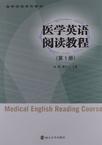医学英语阅读教程-第1册
出版时间:2012-9 出版社:南京大学出版社 作者:高丽,戴月兰 主编 页数:238 字数:343000
Tag标签:无
内容概要
《医学英语阅读教程(第1册医学英语系列教材)》围绕与医学相关的众多主题,突出医学的生物-心理-社会模式,摒弃了过去医学英语教材编写中枯燥的单纯生理模式。
《医学英语阅读教程(第1册医学英语系列教材)》(作者高丽、戴月兰)由南京大学出版社出版。
书籍目录
Unit 1 Human Body as a Whole
Text A
Text B
Unit 2 Human Diseases
Text A
Text B
Unit 3 The Skeletal System
Text A
Text B
Unit 4 The Muscular System
Text A
Text B
Unit 5 The Digestive System
Text A
Text B
Unit 6 The Respiratory System
Text A
Text B
Unit 7 Cardiovascular System I: The Blood and Blood Circulation
Text A
Text B
Unit 8 Cardiovascular System II. The Heart and Blood Vessels ..
Text A
Text B
Unit 9 The Lymphatic System and Immunity
Text A
Text B
Glossary
章节摘录
Physiology Physiology is the scientific discipline that deals with the processes or functions of living things。 It is important in physiology to recognize structures as dynamic rather than static, or unchanging。 The major goals of physiology are to understand and predict the body’s responses to stimuli, and to understand how the body maintains conditions within a narrow range of values in the presence of a continually changing environment。 Physiology is divided according to the organisms involved or the levels of organization within a given organism。 Human physiology is the study of a specific organism, the human,whereas cellular and systemic physiology are examples of physiology that emphasize specific organizational levels。Structural and Functional Organization The body can be studied at six structural levels: the chemical, cell, tissue, organ, organ system, and organism。 Chemical The structural and functional characteristics of all organisms are determined by their chemical makeup。 The chemical level of organization involves interactions among atoms and their combinations into molecules。 The function of a molecule is related intimately to its structure。 For example, collagen molecules are strong, ropelike fibers that give skin structural strength and flexibility。 With old age, the structure of collagen changes and the skin becomes fragile and is torn more easily。 Cell Cells are the basic structural and functional units of organisms, such as plants and animals。 Molecules can combine to form organelles, which are the small structures that make up cells。 For example, the nucleus contains the cell’s hereditary information and mitochondria manufacture adenosine triphosphate(ATP), which is a molecule used by cells for a source of energy。 Although cell types differ in their structure and function, they have many characteristics in common。Knowledge of these characteristics and their variations is essential to a basic understanding of anatomy and physiology。 Tissue A tissue is a group of similar cells and the materials surrounding them The characteristics of the cells and surrounding materials determine the functions of the tissue。 The many tissues that make up the body are classified into four primary tissue types: epithelial, connective, muscular and nervous。 ……
图书封面
图书标签Tags
无
评论、评分、阅读与下载
用户评论 (总计4条)
- 教材,有些乏味,不过内容还行,书是正版的
- 很好,而且价格很实惠
- 正版书,质量好,很满意
- 明天上课要用的
推荐图书
- 城市规划与城市多样性
- 建设工程项目管理成熟度理论及应用--一种提升与改进项目管理能力的途径与方法
- 建筑力学与结构选型(附网络下载)
- 最美女教师张丽莉
- 抗美援朝战争史 修订版(上、下卷)
- 国防资产法律规制研究
- 论海权与中美关系
- 二战时期中国战场国际战略通道研究
- 城镇住房保障政策模式及实证研究
- 新世纪军队政治工作科学发展(上下)
- 相互依赖时代与中国国家安全战略选择
- 文化地理学
- 2013-英语-全国中考试题精选精练
- 2013-物理-全国中考试题精选精练
- 2013-数学-全国中考试题精选精练
- 2013-化学-全国中考试题精选精练
- 灾后贫困村恢复重建机制模式与经验
- 灾后贫困村恢复重建多部门合作的探索
- 防灾减灾/灾后重建与扶贫开发相结合机制及模式研究
- 汶川地震灾区贫困村恢复发展评估
- 中国财政热点问题研究
- 宋元学案补遗(全九册)
- 综合配套改革中服务型政府的构建
- 美学卮言
- 我国OTC市场准入与监管制度研究
